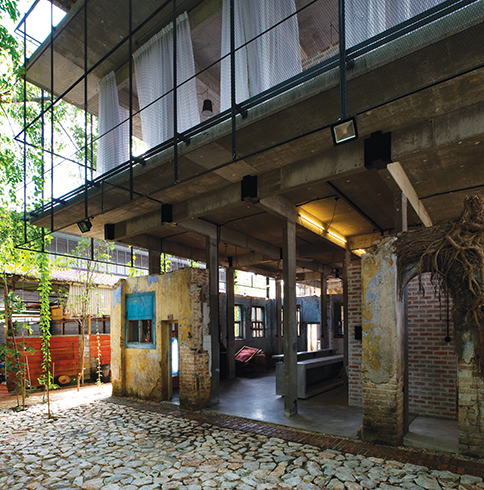KUALA LUMPUR, JULY 19 — Boutique hotels seem to be the new craze for specialised travel accommodation. Most would imagine small, luxurious hotels in far-flung exotic locations such as Phuket and the Maldives or in bustling cities like London and New York.
![]() Whether it’s an independent island resort or a tricked-out designer pad in SoHo, these boutique retreats tend to be intimate in nature, each with a unique character of their own.
Whether it’s an independent island resort or a tricked-out designer pad in SoHo, these boutique retreats tend to be intimate in nature, each with a unique character of their own.
Wherever your fantasy escape is, you wouldn’t expect a boutique hotel to be right next door, smack in your neighbourhood. But residential areas are exactly where some of the Sekeping retreats are located; from Sekeping Tenggiri in Bangsar to Sekeping Seapark in PJ.
Brainchild of landscape architect Ng Sek San, these are boutique hotels with a difference, designed not to be splashy and loud but rather to melt into the background of its surroundings. Other Sekeping retreats include rescued shophouses such as Sekeping Sin Chew Kee in Pudu and Sekeping Kong Heng in Ipoh, as well as the forest getaway Sekeping Serendah in Rawang.

Designing with less for more
With almost three decades of landscape architecture experience under his belt, Sek San is interested mainly in the conservation of a project’s environment. He explains, “I’m trying to build societies and communities rather than just buildings.”
Hence it’s no surprise that, given the opportunity to do yet another lucrative commercial project, the University of Canterbury (New Zealand) graduate still finds time for his beloved Sekeping projects.
“These retreats are things that I cannot do on a corporate scale because it’s either too risky or unacceptable, but I always want to test new ideas. I want to keep trying to push the boundaries of commercial architecture.”
Rather than have the huge budget of a corporate project and a team of architects at his disposal, Sek San is excited by the challenge of making the best out of a restricted situation.
It began back in 2000, with the first Sekeping retreat in the hilly forests of Rawang, Selangor.

He recalls, “At that time, I was very dissatisfied with how houses were built on hill slopes and forested land. I had tried to talk to developers on how to build in a less invasive manner – we don’t need to cut so much or build so much, but I was hitting a wall.
“So Sekeping Serendah was a demonstration of how we could build in a forested environment without cutting down the trees. I started letting the place out to family and friends about four years later as I was no longer really using it, and demand grew through word of mouth, blogs & architecture magazines. We didn’t do any marketing.”
That was the spark for what would eventually become an entire family of Sekeping retreats – a series of boutique hotels that were developed organically to embody a design philosophy rather than built solely for profit.
Sense & sustainability
From well-worn wooden planks to salvaged road signs, the Sekeping retreats often employ the use of recycled and rescued materials. There is a clearly identifiable Sek San design sensibility – a lot of exposed brickwork and concrete; glass and wood; natural greenery that’s allowed to grow wild. Nothing is overly finished.

Sek San says, “I believe in using local materials as much as possible. Compare this with the impact of importing materials (which is the current paradigm in the architectural world): it is too expensive given the cost of transportation, and not sustainable.”
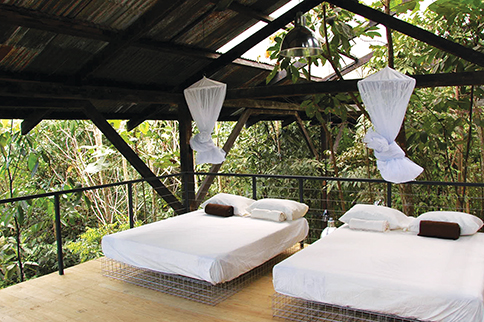
Instead, the principal of Seksan Design which was founded in 1994 believes in anti-globalisation and sustainability in design. “Otherwise every building will look the same,” he warns. “I want to retain a uniquely Malaysian character in the design of my projects, something to stand out from every modern building out there.”
This sustainability sensibility is increasingly shared by other architects and Sek San strongly advocates the sharing of knowledge. In fact, for some of the Sekeping retreats he enlisted young architects such as Farah Azizan of Studio Bikin (who, incidentally, had worked for Seksan Design for seven to eight years prior to starting her own firm).
Besides small projects such as boutique hotels, Sek San insists sustainable design is viable on a larger scale. He points out the PJ Trade Centre, which he designed with Kevin Low, another architect.

“From the outside it looks very brutal, but from the inside it’s actually very green. You’ve got all these gardens stacked up. It’s about using local materials, and about playing with light and shadow.”
With will enough to resist the status quo and abundant creativity, there seems to be no end to what a sustainable design sensibility could achieve.
Rescuing buildings, reviving communities
Almost every Sekeping project that Sek San embarks on has a special significance to its location. Where possible he seeks to restore and preserve the heritage of the affected building or area; and in doing so help revive the community living in its surroundings.
Sek San shares, “My friends and I are from Ipoh, and we always wanted to see how we could make some kind of contribution to our home town. Suddenly this piece of property came up, this three-storey neo-classical building which was likely to be bought up by some developers and mown down to make way for a high rise.
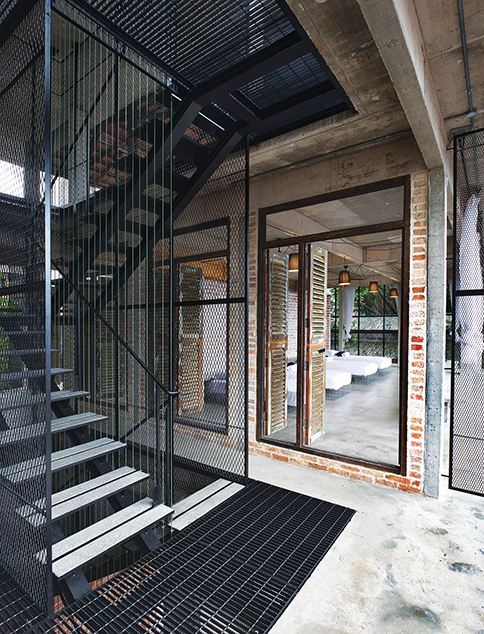
“This was part of the inner city of old Ipoh; I remember growing up... it was a ritual to have breakfast at one of the coffee-shops on the ground floor – Kong Heng. The entire area was an institution to us... the situation then was that some developers wanted to mow the entire city block down and build a high-rise.”
Sek San got together with his friends – a team including his lawyers, a tour agent from Ipoh, and another architect friend – and pooled their resources to buy the old building to save it. He recalls, “At that time, we had no idea what we were going to do with it.”
Eventually the Kong Heng building was carefully restored with the original kopitiam in place (still serving Ipoh’s legendary white coffee and delicious hawker fare to long-time patrons). The rest was converted into Sekeping Kong Heng, a minimalist boutique hotel completed in 2012 that retains much of the building’s original charm.
“In the 70s and 80s, Malaysian towns went through an Americanisation phase where everybody moved into the suburbs. We hope Sekeping Kong Heng can be a catalyst to make the Ipoh city centre more vibrant again, by bringing people back.”
Giving back
Seksan Design has ceased taking overseas commissions for the past eight years to concentrate on work in Kuala Lumpur. Sek San explains, “I want to focus on Malaysia because we understand the culture here, the arts and the people. This is where we locate our practice to do work which is more substantial.
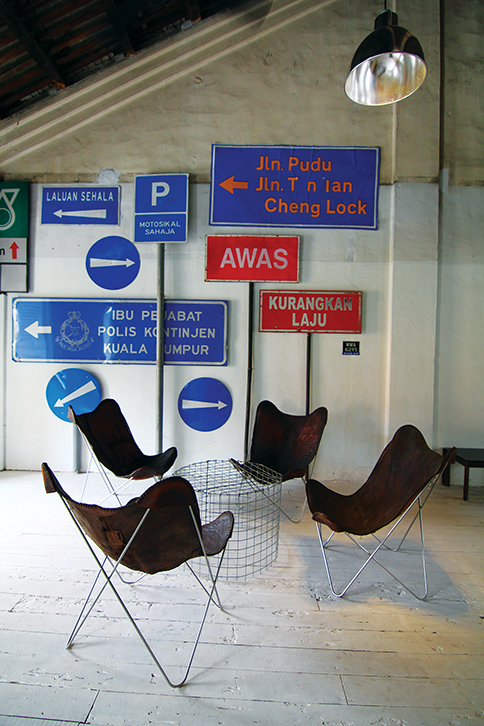
“In terms of our design philosophy, for the depth which we can get into, we need more trusting clients – and my repeat clients here tend to take more risk with my ideas.”
No surprise then that all Sekeping retreats thus far have been located in Malaysia. However, Sek San admits to being a bit weary after seven Sekeping projects in 12 years: “I keep telling myself that this will be the last Sekeping project.”
There must be something which keeps pulling him back though, for he is considering one more Sekeping project – the first to be situated outside the country.

“This one is special because it will be to support an orphanage. I took a sabbatical some years ago in Thailand. During this time I realised that, as successful architects, my friends and I have been servicing the top 10 per cent of society but not the rest. This is our way of giving back to the community.”
Roping in other architects, clients, contractors and developers, Sek San’s team headed to Maehongsan in northwest Thailand to help fund, design and build an orphanage for 40 kids, costing RM2 million. (The project was originally started by Ajahn Cagino, a forest monk and former professional photographer.)
“It’s about 90 per cent complete now, and we are thinking of how to make the project sustainable in terms of income. So we had the idea of building a small Sekeping boutique hotel here, where all proceeds will go into funding the operations of the orphanage.”
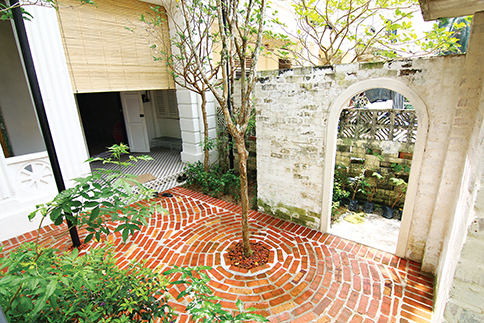
Ultimately Sek San hopes for a change in the attitude of fellow Malaysians in terms of how we use space. He stresses, “We need to move from demanding ever bigger living spaces, which are not sustainable in the long run, and return to multifunctional spaces. For example, we can have a kitchen which doubles as a dining room.”
The green architect would also like to see more affluent, middle-class Malaysians identify with people with less resources. “We need to start living in the same spaces again, rather than segregating ourselves into different areas.”
Perhaps in creating more sustainable spaces to live, we will return to living and interacting as communities too. One can certainly hope so, or follow the lead of Sek San and others who are acting on it.
This story was first published in the print edition of The Malay Mail, July 18, 2013.
















